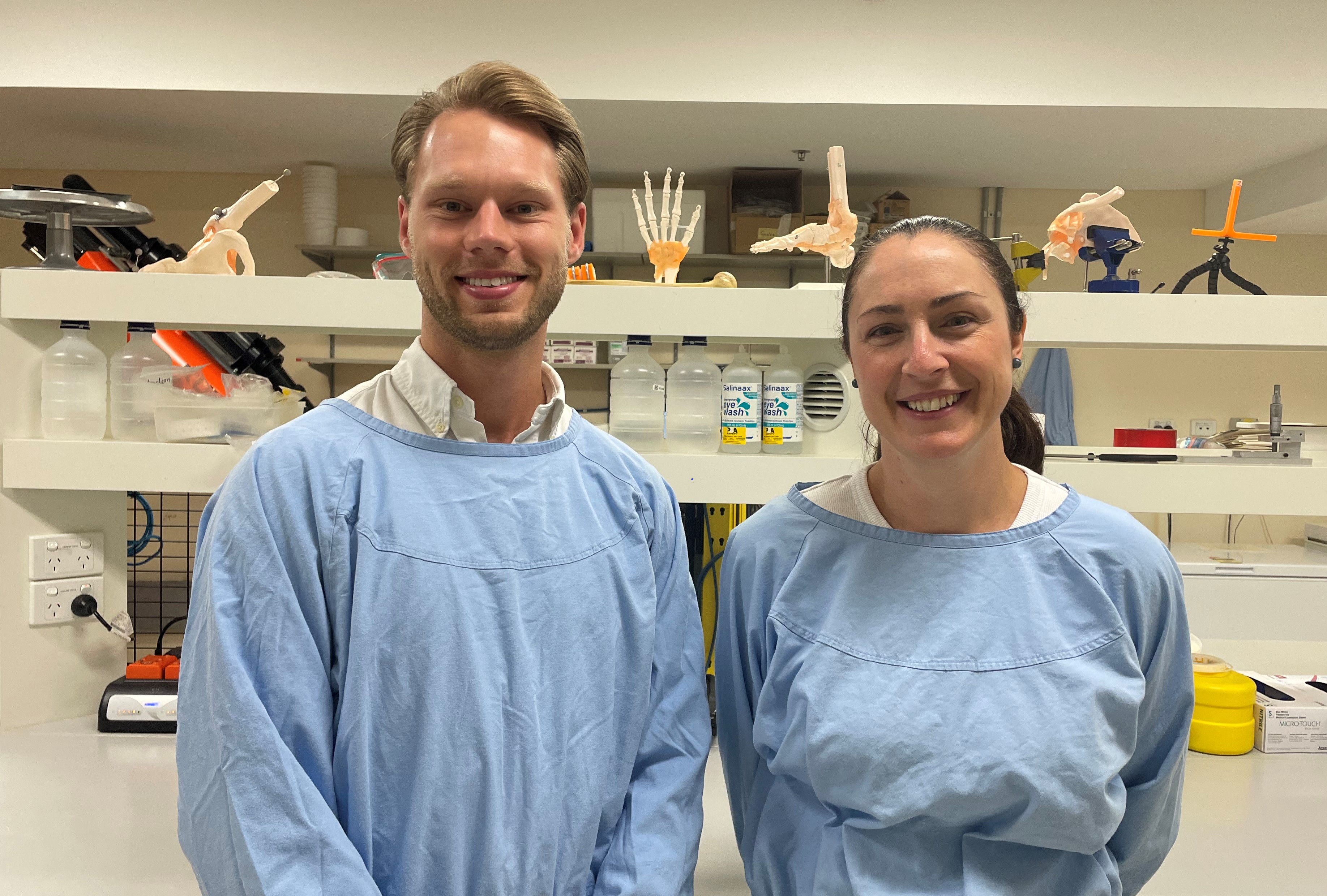 With an increasing number of people suffering anterior cruciate ligament (ACL) injuries, researchers at the Kolling Institute say a broader range of tendon grafts could be successfully adopted by surgeons undertaking knee reconstructions.
With an increasing number of people suffering anterior cruciate ligament (ACL) injuries, researchers at the Kolling Institute say a broader range of tendon grafts could be successfully adopted by surgeons undertaking knee reconstructions.
The research, which is the second-largest human tendon study ever published, is prompting calls for tissue banks to review current age restrictions and the range of tendons approved for grafts.
The study comes as Australia continues to record one of the highest rates of ACL injuries in the world. Interestingly, these injuries are not limited to professional athletes, but are impacting all age groups, particularly children.
Previous research has highlighted a consistent increase in ACL injuries and knee reconstructions in recent years, with the biggest rise impacting children in the five and 14 age range.
Researchers from the Kolling Institute’s Murray Maxwell Biomechanics Lab say their study could help increase the number of tendon allografts used by surgeons, and the options for patients.
Study lead PhD student Dylan Ashton, from the University of Sydney and the Kolling, said if you were to rupture your ACL today and opt for surgical treatment, your orthopaedic surgeon would most likely use your hamstring tendons as a graft to reconstruct your ACL.
“This approach however, can cause additional pain and create functional deficits. It can also be difficult to source enough healthy tendon in younger patients, and those who have re-ruptured their ACL,” he said.
“These issues have increased the popularity of using tendon allografts, which are sourced from deceased human tissue donors.
“Currently there are strict limitations around the type of allografts used, and age limits where tissue banks will only accept donors up to the age of 65 years.
“We expect our research findings will now prompt a review of these restrictions.
“We mechanically assessed the strength of nine tendons from the lower leg, three commonly used as allografts, and six new candidates.
“As part of our research, we investigated the impact of donor age, sex, height and weight on the biomechanical properties of the graft.
“Importantly, we found that donor age was not associated with weaker tendons, even when including donors into their nineties - and the strength of the new tendons was higher than the strength of tendons which are commonly used as allografts.
“We also found that even though these new candidates were slightly smaller, five out of the six new tendon options were able to withstand the same or higher force as a hamstring tendon.”
Laboratory Director, Associate Professor Elizabeth Clarke said our findings are important as it means there could be a much broader range of tendon options available to surgeons and their patients, and this could directly improve outcomes for those who experience this increasingly common ACL injury.
“We hope this new research will give surgeons and tissue banks greater confidence to consider a wider range of tendons, and a higher age range of tissue donors when allografts are indicated for ACL reconstruction,” she said.
The team is pleased to have completed this body of research which represents a significant step towards more evidenced-based options for the treatment of ACL injuries in Australia.
The study’s findings have been published in the prestigious American Journal of Sports Medicine.